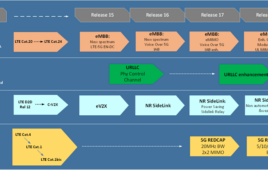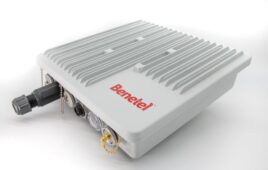Ericsson is expanding its 5G portfolio by introducing a new radio product that supports massive MIMO, and will help operators bridge 4G to 5G, the company says.
The AIR 3246 supports both 4G LTE and 5G NR (New Radio) technologies and is the company’s first 5G NR radio for frequency division duplex (FDD).
Ericsson indicated operators, specifically in dense metro areas, will be able to bring 5G to customers using current mid-band spectrum, as well as boost capacity in their LTE networks.
“Just as carrier aggregation has been key to adding needed capacity to mobile broadband networks, massive MIMO has the potential to be the primary capacity enabler in the next upgrade phase, providing a smooth transition towards 5G,” Stefan Pongratz, senior director at the Dell’Oro Group, commented. “With an expected 2021 installed base of 10M LTE macro radios in high traffic and metro areas, service providers are expected to capitalize on the improved spectral efficiency made possible with Massive MIMO.”
This news builds on Ericsson’s product launches back in February of time division duplex (TDD) radios capable of supporting 5G and massive MIMO.
Ericsson is utilizing FDD massive MIMO as part of a three-site trial with T-Mobile in Baltimore. The company indicates that this will be the first time standardized massive MIMO will be used to carry commercial LTE traffic using mid-band FDD spectrum.
“T-Mobile’s racing forward at breakneck pace with Ericsson’s next-gen tech that advances LTE today and paves the way for 5G tomorrow,” T-Mobile CTO Neville Ray noted. “While the carriers scramble to prop up networks caving under the weight of unlimited, the Un-carrier’s rolling out advanced technologies to massively increase network capacity and data throughput for customers.”
T-Mobile isn’t the only carrier moving ahead with massive MIMO tests. Back in June Sprint forged ahead with a new series of massive MIMO tests with Samsung in South Korea.
“The testing in South Korea is an important step towards deploying Massive MIMO in our U.S. network where it will be a key element of LTE Plus as well as 5G,” Sprint COO of Technology Guenther Ottendorfer said in a statement. “Massive MIMO is a tremendous differentiator for Sprint because it is easily deployed on 2.5 GHz spectrum due to the small form factor of the radios needed for a high frequency band. In lower frequency bands, wavelengths are much longer and therefore the radios require much larger, impractical form factors. This makes Massive MIMO an important tool for unleashing our deep 2.5 GHz spectrum holdings.”




